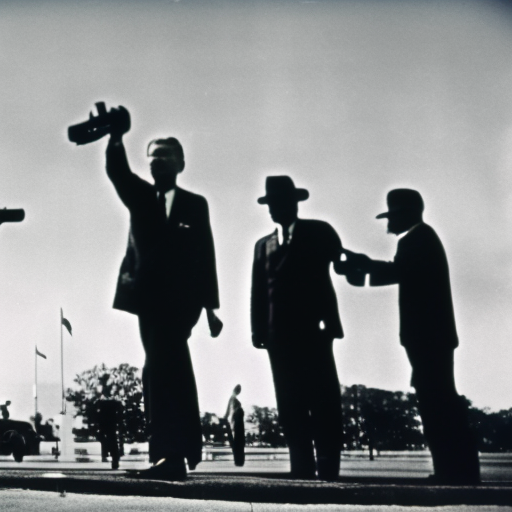Summary:
The assassination of John F. Kennedy, the 35th President of the United States, took place on November 22, 1963, in Dallas, Texas. Kennedy was shot and killed while riding in a motorcade through Dealey Plaza. The assassination shocked the nation and had a profound impact on American history.
Background:
John F. Kennedy was elected as the President of the United States in 1960, defeating Richard Nixon. He was a charismatic leader who inspired hope and optimism in the American people. Kennedy’s presidency was marked by several significant events, including the Cuban Missile Crisis and the Civil Rights Movement.
The Assassination:
On November 22, 1963, President Kennedy and his wife, Jacqueline Kennedy, traveled to Dallas, Texas, as part of a political trip to mend divisions within the Democratic Party in the state. As the presidential motorcade made its way through Dealey Plaza, shots rang out. Kennedy was struck by two bullets, one in the head and one in the neck. He was rushed to Parkland Hospital but was pronounced dead at 1:00 p.m. local time.
The Investigation:
Following the assassination, a massive investigation was launched to determine who was responsible for Kennedy’s death. The investigation was led by the Warren Commission, which concluded that Lee Harvey Oswald acted alone in shooting Kennedy from the sixth floor of the Texas School Book Depository. Oswald was arrested shortly after the assassination but was killed two days later by Jack Ruby, a nightclub owner with alleged connections to organized crime.
Conspiracy Theories:
Despite the Warren Commission’s findings, many conspiracy theories have emerged over the years, suggesting that there was more to Kennedy’s assassination than meets the eye. Some theories propose that Oswald was part of a larger conspiracy involving the CIA, the Mafia, or even high-ranking government officials. These theories continue to captivate the public’s imagination and fuel speculation about the true nature of Kennedy’s death.
Impact:
The assassination of John F. Kennedy had a profound impact on American society and politics. It marked the end of an era of optimism and idealism in the United States. Kennedy’s death left the nation mourning and questioning its future. Lyndon B. Johnson, Kennedy’s vice president, was sworn in as the 36th President of the United States aboard Air Force One just hours after the assassination.
Legacy:
John F. Kennedy’s assassination left an indelible mark on American history. He is remembered as a charismatic leader who inspired a generation. Kennedy’s vision for a better America, as outlined in his famous inaugural address, continues to resonate with people around the world. The Kennedy family’s legacy in American politics also endures, with several family members serving in prominent political positions.
Conclusion:
The assassination of John F. Kennedy remains one of the most significant events in American history. The shocking and tragic nature of his death, coupled with the enduring mystery surrounding it, has ensured that Kennedy’s legacy lives on. His presidency and untimely death continue to captivate the public’s imagination and serve as a reminder of the fragility of leadership and the impact one individual can have on a nation.












